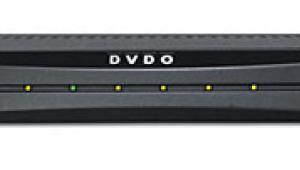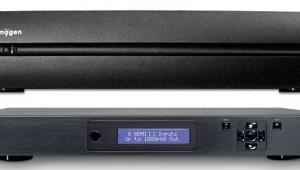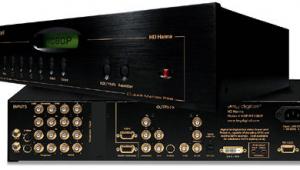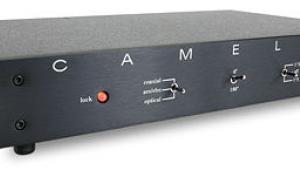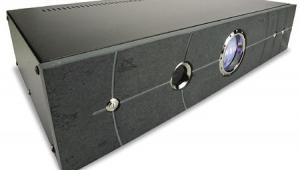IOGear GHDSSW4 3D Complete+ 2D-to-3D Converter
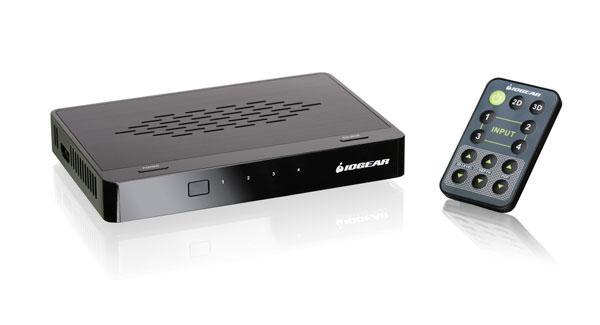
At a Glance: Four-port HDMI switch • Inconsistent 2D-to-3D conversion • 3D conversion of video games causes lag
Believe it or not, the idea behind 3D movies started in the 1890s when William Friese-Greene filed a patent for a 3D movie process in which two films would be projected side by side on the screen and the viewers would look through a stereoscope to converge the two images. Needless to say, this didn't take off given the impractical viewing conditions. Over the next 100-plus years, 3D would attempt—and fail—to catch on with audiences.
Some would argue that a monumental shift happened in 2009 when James Cameron's Avatar hit theaters, breaking all kinds of records with a middling sci-fi adventure story that blew audiences away with its three-dimensional images. Sure enough, the electronics manufacturers, who had just begun promoting a then-pricey 3D capability in the newest HDTVs, jumped on board and started to seriously hype 3D for the home.
I've owned a 3D projector since early 2011, and while the wow factor at first was great, a few problems have developed over time. First, I find the active glasses (admittedly early-generation models) very heavy and uncomfortable to wear for a long period of time. Second, there isn't a lot of 3D content on the market beyond a limited number of Blu-ray movies and a smattering of sports programming on obscure cable/satellite channels. But third, and most importantly, there's a severe lack of good content. A crappy movie or sporting event in 3D is still crap with added depth and dimension. But what if you could take any 2D program and convert it to acceptable-looking 3D? It's an interesting concept, and IOGear has come up with a solution with its GHDSSW4 3D Complete+ 2D-to-3D converter.
While many TVs and Blu-ray players offer their own 2D-to-3D conversion, this isn't a standard feature for all products. The 3D Complete+ is a stand-alone device that you connect to your source components to convert the 2D signal into 3D, giving you an unlimited supply of 3D content. To be clear: You still need a 3D display, using either active or passive 3D glasses—this box can’t turn a 2DTV into a 3D-capable model. But if you already own a 3D HDTV or projector, the 3D Complete+ is intended to expand your world of available 3D content.
What's in the Box?
The 3D Complete+ is a tiny box measuring just under 1 inch tall, 6 inches wide, and 4 inches deep. The sparse front panel includes four blue LEDs to indicate which of the four HDMI inputs is active. On top of the unit are Power and Source buttons, and the rear face harbors three of the HDMI inputs and one HDMI output. The fourth HDMI input is located on the left-hand side of the unit to keep the form factor small and to better facilitate hookup of a portable HDMI-capable device such as a camcorder, tablet, or cell phone.
Control of the unit is accomplished with a miniscule credit-card-style remote with buttons for Power, 2D mode, and 3D mode, and a dedicated button to select each HDMI source. Additional controls are for 3D Level, Depth, and Pop, which you can adjust with their own up/down controls. Given its dainty size, I could easily see this remote getting lost in the couch cushions or ingested by the family pet, which wouldn't be a good thing since you can't make any custom adjustments without it. Furthermore, any adjustments made aren't saved in memory, and every time the unit is powered on, you must readjust the settings from its defaults.
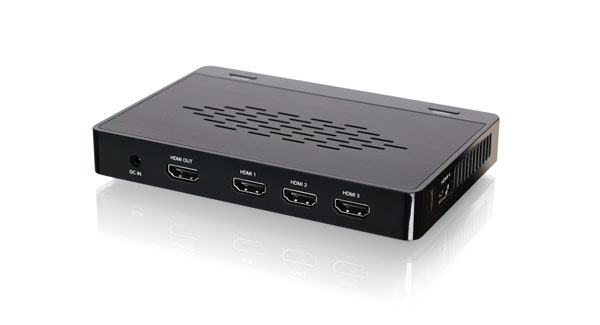 Performance
Performance
I tested the 3D Complete+ with three source components; a TiVo Series3 DVR, an Oppo BDP-95 Blu-ray player, and a Sony PS3 gaming system. All were fed directly into the unit, with its lone HDMI output feeding an Integra DHC-9.9 surround processor going to a JVC DLA-RS40 3D projector.
With some test patterns, I was able to determine that, in 2D mode with the box’s built-in Enhancement mode set to off, the IOGear doesn't degrade the incoming signal. This is always a good thing. With Enhancement enabled, the unit boosts the signal’s gamma, adding a bit more brightness to the image at the expense of contrast ratio. Unfortunately, when the unit is powered on, the default settings enabled the Enhanced mode and required a push of the 2D button each time to switch it to off.
In 3D mode, the default settings show subtle 3D depth, but watching San Francisco Giants baseball in 3D didn’t necessarily enhance my viewing pleasure. Adjusting each of the custom settings to their max values did improve things slightly, although the resulting picture isn't going to knock Avataroff its 3D throne anytime soon.
The same could be said about the 3D Complete+ when converting 2D Blu-ray movies to 3D. Playing the 2D version of Despicable Me really showed the unit’s shortcomings. The Blu-ray 3D of Despicable Me is one of my favorite demo discs, and the roller-coaster scene highlights how immersive the 3D experience can be in the home. Comparing the two demonstrated that the conversion does provide adequate depth, but the foreground image doesn't reach into the room like the Blu-ray 3D does. Maybe this is an unfair test comparing a native 3D image to a converted one, but it does highlight the IOGear's limitations.
My final test was to convert some 2D games on the PS3 to 3D, although this was short-lived due to a massive amount of image lag induced by the conversion process. Trying to hit a baseball in MLB 12: The Showwas virtually impossible, and I gave up after striking out nine times in a row. What's the use of added depth if it makes playing the game impossible?
Conclusion
If all 3D content could look like Avatar, I have no doubt there would be a 3D-capable display in virtually every home. Hollywood has tried converting 2D images to 3D in post-production and has given us such flops as Clash of the Titans and Avatar: The Last Airbender, whose stories and 3D treatment left a lot to be desired. Some more recent 2D-to-3D conversions (including Men In Black: 3) have achieved better results, but, sadly, that's not the case with the IOGear 3D Complete+. While the converted image definitely looks somewhat 3D, it's not compelling enough to pluck down $200 unless you are the most diehard 3D fanatic and don’t have a display that can do a similar conversion itself.
